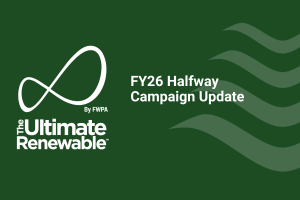The national, cross-industry iMapPESTS program brings together research scientists, government representatives and all plant-based Rural Research and Development Corporations (RDCs).
The project includes custom-designed and built mobile surveillance units, known as ‘sentinels’. Fitted with various high-tech sampling equipment, the three sentinels built for this project are currently deployed in trials at various locations around South Australia.
The sentinels capture airborne samples, which are then sent to partner laboratories and examined to identify the presence of high priority pests and pathogens. Five trials have already been completed, with more now underway.
Jodie Mason, Forest Research Manager at FWPA said the project is exciting because all plant-based RDCs have come together around a common interest.
“The project is a result of the recognition that sampling the air affects lots of different industries that are geographically collocated, including forestry,” Ms Mason said.
“Once collected and analysed, the data can be used by industry to guide the direction or intensity of scouting efforts and pest control activities. It could also facilitate a coordinated cross-sector response to biosecurity efforts during exotic pest and disease incursions.”
Research collaborators are trialing new and emerging diagnostic tools aimed at speeding up the delivery of accurate information about what is captured by the sentinels. This includes exploration of something known as high throughput sequencing (HTS).
The HTS approach takes the sample of insects or fungi and sucks out the various genetic codes. This results in a ‘DNA soup’ that can be scanned using a database of known DNA codes to detect and flag the particular species present. This technique has the potential to detect more targets using a single test and discover biosecurity threats early, allowing for a more effective response to an incursion.
In addition to the detection of insect pests, the application of HTS for diagnostics around exotic fungal species is being further explored by Agriculture Victoria PhD candidate, Conrad Trollip.
Fungal pathogens that have an impact on forestry in Australia include Dutch elm disease and blue stain fungi. These types of fungi are part of a closely related collective of species, known as the Ophiostomatoid group. The pathogen that causes the Dutch elm disease fungus is exotic to Australia, while blue stain fungi are endemic. Differentiating between exotic and endemic species is integral for accurate and timely diagnostics and response.
Trollip’s research is therefore curating a database of the species within the Ophiostomatoid group detected by the sentinels, and investigating the most accurate markers to help differentiate between these targets.
The project was made possible thanks to a grant under the Australian Government’s Rural R&D for Profit program, which enables nationally coordinated, strategic research that delivers real outcomes for Australian producers.
For more information, visit imappests.com.au.



